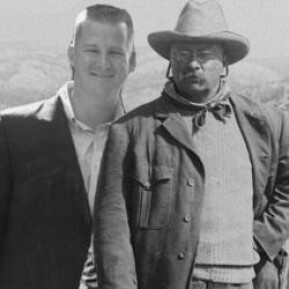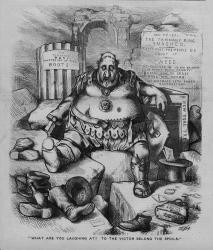Scott Karavlan
Teacher
Fox Chapel Area School District
Social Studies
:
A Philosophy and History Teacher, Husband, Co-creator Logan, Rose, and Ronan. When I'm not eating beets, fly fishing, watching Star Wars with my children, or crafting lessons to help my students better understand Plato and Roosevelt, I am probably coaching Football, Track & Field, or U-9 soccer.
Twitter: @Karavlan
Scott Karavlan's collections
Student Curated Collection Assignment (Sample)
<p><b><i>These artifacts serve as an example of a student curated collection.</i></b></p><p><b><i><span></span>The artifacts in this collection have been selected and organized to "...describe the effects of the Great Depression on families."</i></b></p><p><b>These artifacts serve as an example of a student curated collection.</b></p><p>After discussing how this collection of artifacts can help us <strong>Understand</strong>, the Great Depressions impact on families. Students can <strong>Analyze</strong>, what information from the artifacts are relevant and discuss why these artifacts were organize in this way. Finally, they will <strong>Evaluate</strong>, how well the artifacts tell the story of the Depressions impact on families.</p><p>Following class discussion on this collection, students become the historians themselves and curate their own collections.</p><p><b><br /></b></p><p><b><i></i>You are a Historian Working in the Smithsonian Archives!</b></p><p><span class="s1">Today you are entering the archives of the Smithsonian institute. </span></p><p><span class="s1">You will utilize the 'Smithsonian Learning Lab', an online toolkit that enables you (the historian) to find, customize and share digital museum resources with others. œ</span></p><p><span class="s1">The Learning Lab grants you access to more than a million diverse resources from across the Smithsonian.</span></p><p><span class="s1">Your assignment is to identify <b>three (3)</b> artifacts that will help you examine the spread of unemployment and Poverty in America during the Great Depression.</span></p><p><span class="s1">We can learn about those Americans who lived in the past by looking at the objects and documents that people left behind and that have somehow survived.</span></p><p><b>Your individual assignment, will be one of the following 'objectives'.</b><br /></p><ul><li><span class="s1">Analyze the effects of the Great Depression on farmers.</span></li> <li><span class="s1">Analyze the impact of human and geographical factors that created the Dust Bowl.</span></li> <li><span class="s1">Describe how the Great Depression affected family life and the lives of those who lived during the Depression.</span></li> </ul><p><span class="s1">Within the Smithsonian Learning Lab Create and </span><span class="s3">name your collection:</span></p><p><span class="s1"><i>"Spring 20** 'Your Last Name' Depression Research"</i></span></p><p><span class="s1"><b>Example:</b> <i>Spring 2017 Karavlan Depression Research </i></span></p><p><span class="s1"><b>Add three (3</b>) artifacts to your collection. </span></p><p><span class="s1"><b>Edit the description of your collection</b> to explain how these artifacts answer your individual assignment. </span></p><p><span class="s1">What did you learn from examining your artifacts?</span></p><p>When complete share the link to your collection with Mr. Karavlan.</p>
 Scott Karavlan
Scott Karavlan
5
Two approaches to resolving the Great Depression
<p><strong>Objective:</strong> To contrast Franklin D. Roosevelt's approach to resolving the Great Depression with Herbert Hoover's approach.</p><p><em>Herbert Hoover did not cause the Great depression, but Americans looked to him as their President to solve the financial and humanitarian crisis. At the beginning of the economic downturn, Hoover followed a hands-off policy.</em></p><p><em>Franklin D. Roosevelt pledged a "New Deal" for the American people. He believed that the federal government needed to play an active role in promoting recovery and providing relief.</em></p><p><strong>Directions:</strong> Review the images in the collection and the information provided with each, determine whether the artifact reflects Herbert Hoover's response to the Great Depression or if it reflects Franklin Delano Roosevelt's response to the Great Depression. <br /></p><p>At the end of the collection, you will be asked to sort the images into two categories and answer some evaluative questions.<br /></p><p>tags: FDR, Bonus Army, Great Depression, Herbert Hoover, Franklin Delano Roosevelt, New Deal, 1930s, </p>
 Scott Karavlan
Scott Karavlan
15
Prohibition Political Cartoons 'Wets' vs "Drys' (Sorting Activity)
<p>This collection of political cartoons examines Prohibition from the perspectives of both "drys and wets'.</p><p>First, review the images in the collection, second, determine whether the cartoonist has a 'wet' or 'dry' perspective. </p><p>When you are done you will be asked to sort the images into one of two categories.<br /></p>
 Scott Karavlan
Scott Karavlan
7
Thomas Nast & Tammany Hall
<p>Thomas Nast, a German-born American editorial cartoonist was the bane of Boss Tweed and the Tammany Hall political machine.</p>
 Scott Karavlan
Scott Karavlan
12
Technology of the Great War (WWI, World War One)
<p>Technological advancements contributed to World War I costing more money and killing more people than all previous wars in history.</p>
<p>Students will be able to answer the question: What kinds technology existed during the First World war and what were their impacts on the war?</p>
 Scott Karavlan
Scott Karavlan
23


